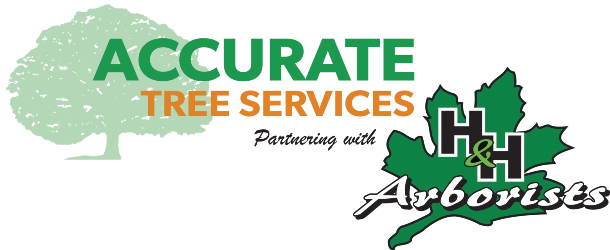
During the winter, trees become dormant, saving energy for the growing season. Now that it’s spring, they’re putting all that energy to use. Spring is a great time to give your trees some extra care to make sure they thrive during this time of growth. A bit of extra maintenance now can save you time and money down the line, all while keeping your trees strong and beautiful.
Read on for 7 tips you can use to give your trees a head start this spring.
1. Clear Debris From Around the Trunk
During winter, it’s common for trees to drop branches and leaves around their bases. Clearing this debris away is important to maintain airflow and also prevent mold and fungal growth. The moisture trapped beneath this debris can also attract pests that could harm your tree.
To Protect Your Tree’s Roots…
- Rake leaves and remove other organic matter, like twigs and leaves.
- Prune away dead or weak branches so they don’t fall on their own during windy conditions.
2. Check Trees For Winter Damage
Winter weather in Madison, WI can cause a lot of damage to trees. Inspecting your trees at the beginning of spring can help protect them – and your property – from further damage.
Look Out For…
- Weak or damaged branches. These can be a safety hazard and should be removed promptly.
- Cracks in tree bark. Wood expands and contracts with weather changes, which can cause cracks in your trees. These cracks can leave your trees more susceptible to disease and pest infestations.
- Newly leaning trees. The freeze-thaw cycle can soften the ground and make your trees’ roots unstable. If you notice a tree leaning that wasn’t before, it’s vital that you get in touch with a tree professional right away to make sure it doesn’t tip farther or fall over.
If you notice any of these issues, make sure you act quickly, since they will only get worse if left alone.
3. Look for Signs of Pests
Pests are also coming back in full force during springtime, and they’re looking for plants to infest. Some insects overwinter in tree bark, and the soil around the roots is another appealing place for them to spend the winter. Where there’s new growth, pests will arrive shortly after.
Inspect Your Trees For:
- Holes bored in bark and “sawdust” at the base of the tree. These could be signs of boring pests like beetles.
- Chewed, curled, or discolored leaves. Each of these could indicate pests or plant disease.
- Sticky residue on the trunk. While trees do occasionally leak sap naturally, this could also be a substance called “honeydew,” which is left behind by aphids, scale insects, and other pests that feed on sap.
Dealing with tree pests is difficult or impossible without help from a professional. The sooner you notice signs of pest activity, the easier they will be to deal with.
4. Refresh The Soil With Mulch and Fertilizer
Trees use up the nutrients in their soil over time. Replenishing those nutrients with fertilizer is an important part of keeping them healthy and strong, but it’s just as important to make sure you use the right type and amount of fertilizer.
How to Improve Soil Health
- Consider soil aeration. This involves punching holes in the soil to reduce soil compaction and increase water and nutrient absorption.
- Apply mulch, leaving a few inches free around the roots. This will insulate the soil, help conserve water, and keep weeds down.
- Have your soil’s nutrient levels tested. This will help you determine the type and amount of fertilizer needed.
Nutrient testing requires help from a professional but will pay off in the long run. Using too much fertilizer, or the wrong type, can do much more harm than good.
5. Trim Your Trees
Trimming your trees is important for their overall health – not just their looks. Spring is the perfect time to remove any branches damaged during the winter and strengthen the rest of the tree.
How to Prune Your Trees:
- Remove dead, weak, or damaged branches. This will prevent them from falling on their own.
- Thin out your tree’s crown (the leafy part) to prevent crowding and allow better sunlight exposure.
- Even out the tree to encourage balanced growth and reduce the risk of the tree tipping over.
6. Establish a Watering Schedule
Even with the help of spring rains, your trees may need additional watering to stay healthy. A consistent watering schedule can help your trees resist environmental stress and plant disease.
How to Water Your Trees
- If you planted new trees this year, make sure they get extra water to help them stand up to stress and grow strong.
- Keep an eye on the moisture levels in the surrounding soil to make sure you aren’t over- or under-watering your trees.
- If your area experiences any dry periods, make sure to give all your trees periodic “deep waterings” to protect them.
7. Have a Professional Tree Assessment
While you can perform some of these tree care tasks on your own, professional help is always beneficial. With a tree inspection from a professional, you can find out exactly what your trees need and how to give it to them. Plus, a pro can spot signs of disease, pests, or structural weaknesses before they get out of control.
Benefits of a Professional Inspection:
- Accurate pruning for healthy growth.
- Early detection of diseases, infestations, and more.
- Professional assessment of your trees’ overall health.
- Customized tree care plans.
With the skills and insight that a professional arborist brings to the table, you could save time and money – and keep your trees beautiful all year long.
Accurate Tree Services + H&H Arborists Can Keep Your Trees Healthy This Spring
Spring is the perfect time to give your trees a boost. With the help of a certified arborist from Accurate Tree Services + H&H Arborists, your trees will have the best possible help. Whether you need a quick trim or a comprehensive tree health assessment, and wherever you are in Madison, WI, our team is ready to help. Give us a call to get started with a free estimate!
7 Springtime Tree Care Tips in the Greater Madison, WI area
Serving Dane County
Madison | Verona | Fitchburg | Middleton | Monona | Waunakee | McFarland | Sun Prairie | Oregon (WI) | Cross Plains
Stoughton | Cottage Grove | DeForest | Belleville | Mount Horeb
Home » 7 Springtime Tree Care Tips



